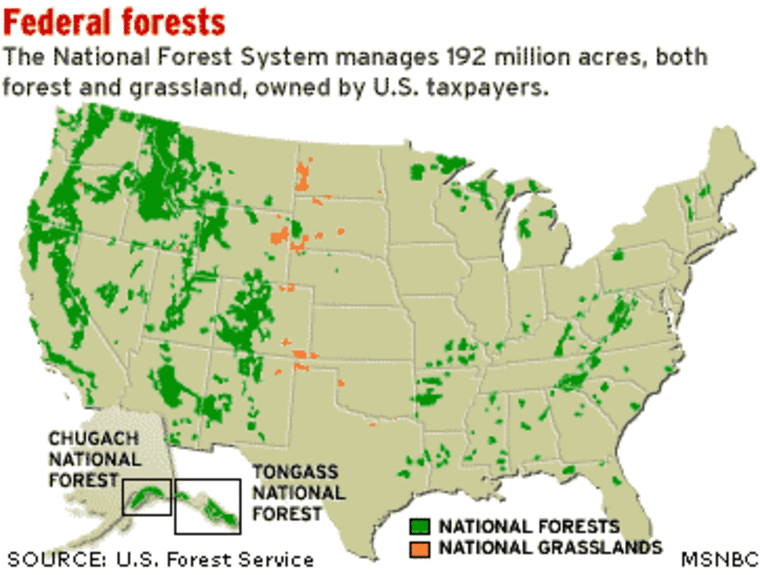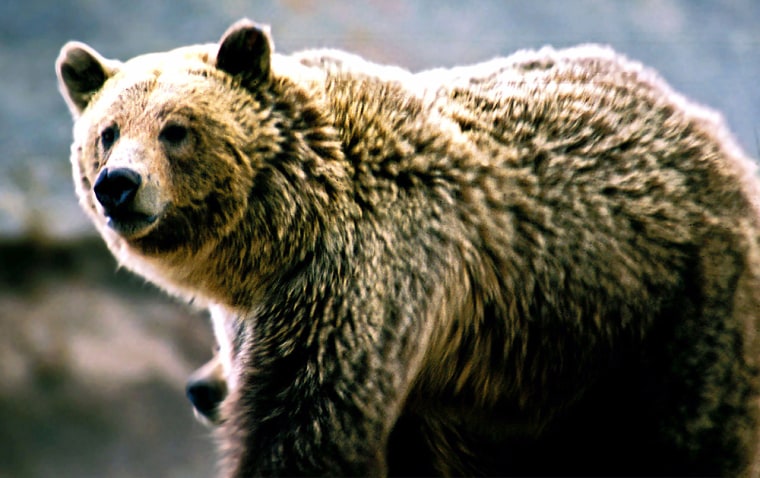The Bush administration on Friday moved towards removing grizzly bears in the Yellowstone area from protected status under the Endangered Species Act, but even before the public feedback process begins, environmental groups were already roaring disapproval.
The controversy centers on the grizzly population living in six national forests around Yellowstone National Park. In anticipation of an expected move to delist the Yellowstone bears, the U.S. Forest Service has drawn up a plan to protect their habitat.
The region is the largest of six grizzly ecosystems left in the lower 48 states. The Yellowstone area is thought to have about half of the total mainland population of around 1,200 to 1,400. An estimated 50,000 grizzlies roamed the continental United States two centuries ago.
No one disagrees that the population has been recovering, but environmentalists say the proposed habitat area is too small, will foster inbreeding and eventually wipe out recovery efforts. They urged the Forest Service to instead adopt another scenario that was studied — one that would have increased habitat area by 2 million acres and barred oil and natural gas development there.
"The federal government wants to sign the grizzly bear delisting order with their right hand, while using their left hand to wave goodbye to habitat that grizzly bears require for long-term survival in the U.S. Northern Rockies — their last stronghold in the lower 48 states,” Louisa Willcox, director of the Wild Bears Project for the Natural Resources Defense Council, said in a statement.
Inbreeding issue
The activists alsooppose a Forest Service suggestion that it could tranquilize and airlift bears from other areas should inbreeding become a problem.
“Instead of working to restore that natural system, the Forest Service has concocted an experiment to play grizzly bear Cupid with helicopters and love darts,” said Rob Ament, director of American Wildlands.
“These are especially hard times for grizzly bears, which face a continual loss of habitat as human developments increase," added Lance Craighead, a Montana State University biology instructor. "Think of Yellowstone grizzlies as a rural village of about 500 residents, where no one new has come to live for 100 years. Bears are feeling the effects of inbreeding much as the same number of people would.”
Becky Aus, supervisor for the Shoshone National Forest, said studies don't indicate inbreeding will become a problem but added that bringing bears in has to be taken into account. Efforts are being made to create corridors, she said, but "natural migration is currently improbable because much of the land that would serve as connective corridor is privately owned."

The energy, recreation angles
The activists prefer a much more restrictive habitat alternative studied but rejected by the Forest Service. It would protect habitat in 8 million acres, compared with 6 million in the alternative proposed by the Forest Service.
The restrictions would reduce logging by one third and close:
- 1,900 miles of roads.
- Recreation sites with recurring human/bear conflicts.
- 1 million acres to snow machines.
- 79 allotments for sheep grazing.
- 4 million acres to oil and natural gas drilling.
“The best solution is to maintain all remaining roadless country and to allow bears some space to move into and out of the Yellowstone ecosystem to maintain genetic variation and sustain healthy populations," Craighead said.
The Forest Service, in a Q&A document prepared for the public, acknowledges that the more restrictive alternative would be best for the grizzlies, but added that it would come at a cost to human use of forest lands. That alternative "would provide the best protection of the grizzly bear but would have the most impacts on developed recreation, timber, grazing, and oil and gas," it stated.
The Bush administration has opened more public lands to drilling, and environmentalists note that the Bridger-Teton National Forest, one of the six U.S. forests affected by the proposal, recently announced oil and gas lease sales on 80,000 acres where grizzlies recently moved back into.
The Forest Service promised to adjust should problems develop. Developed over 10 years, "the strategy contains numerous monitoring requirements for bear populations and bear habitat, including preparation of an annual monitoring report," said Aus. "The strategy is an adaptive document and is designed to be responsive to changing conditions."
The Forest Service proposal and alternatives are online at www.fs.fed.us/r1/wildlife/igbc.
Public comments are being taken at r2grizzly@fs.fed.us through Nov. 12.
